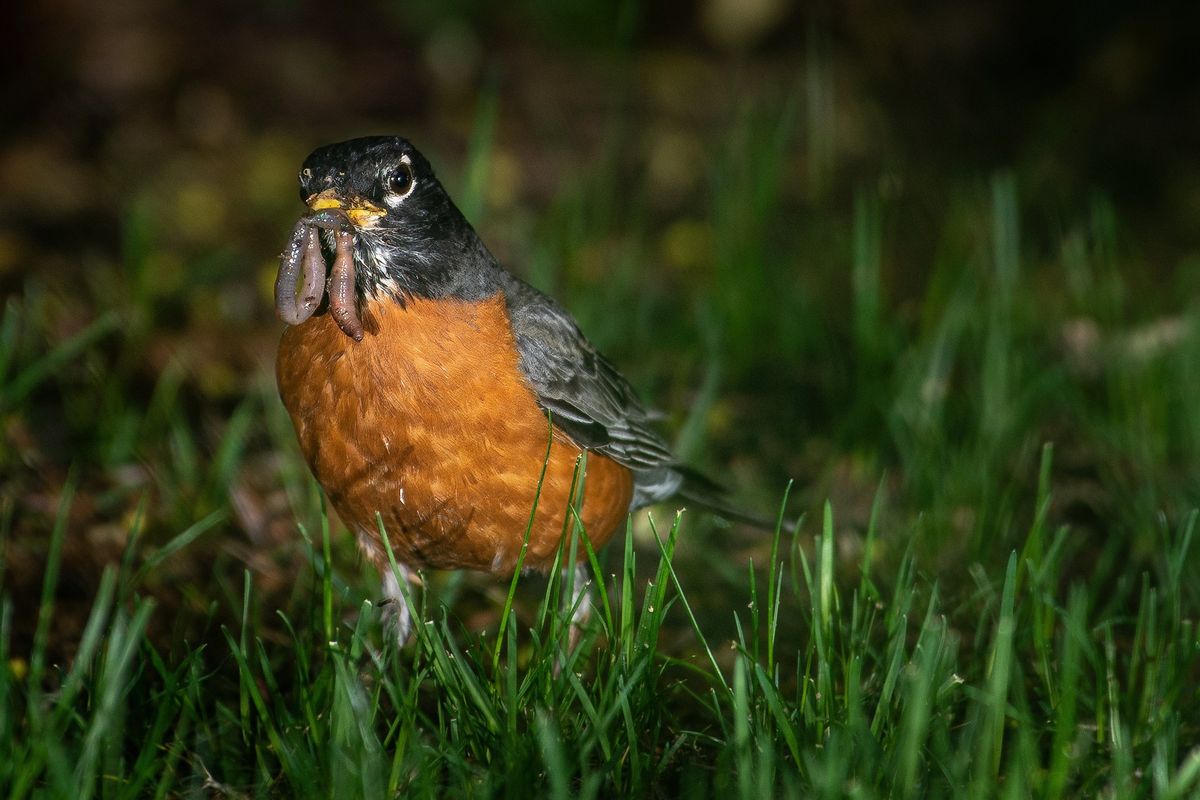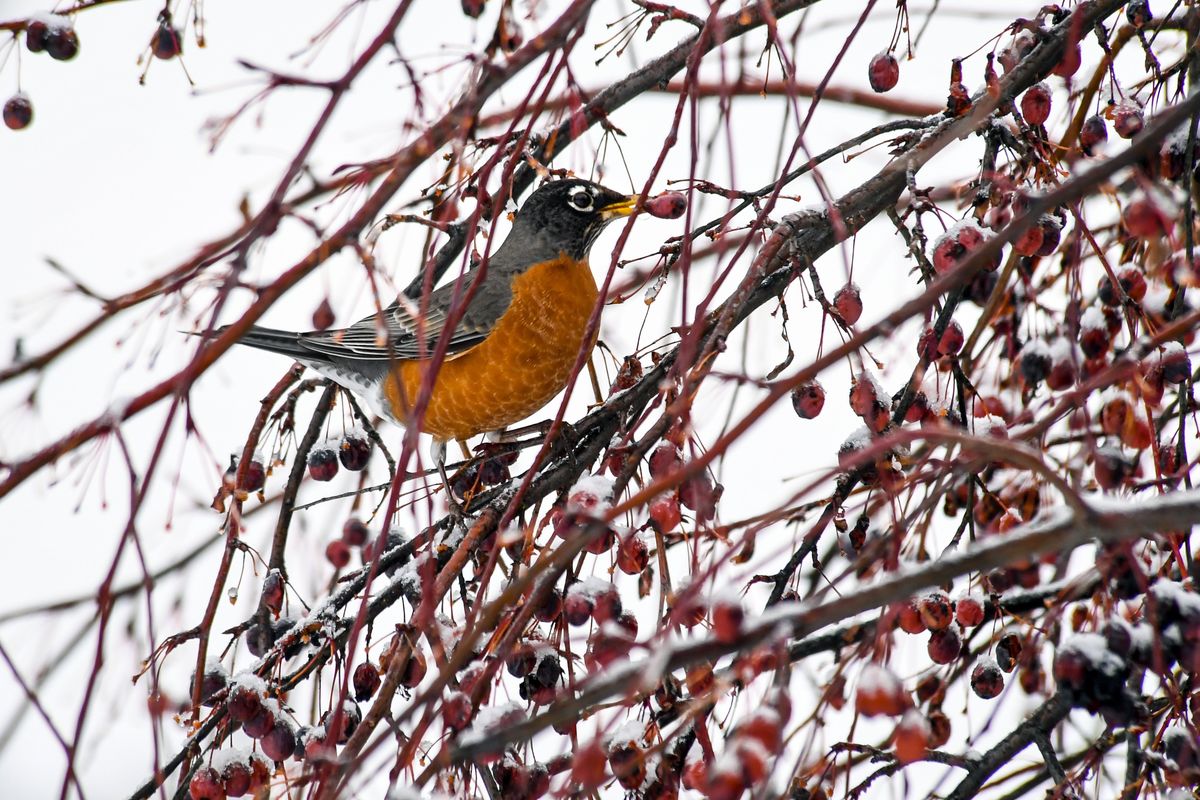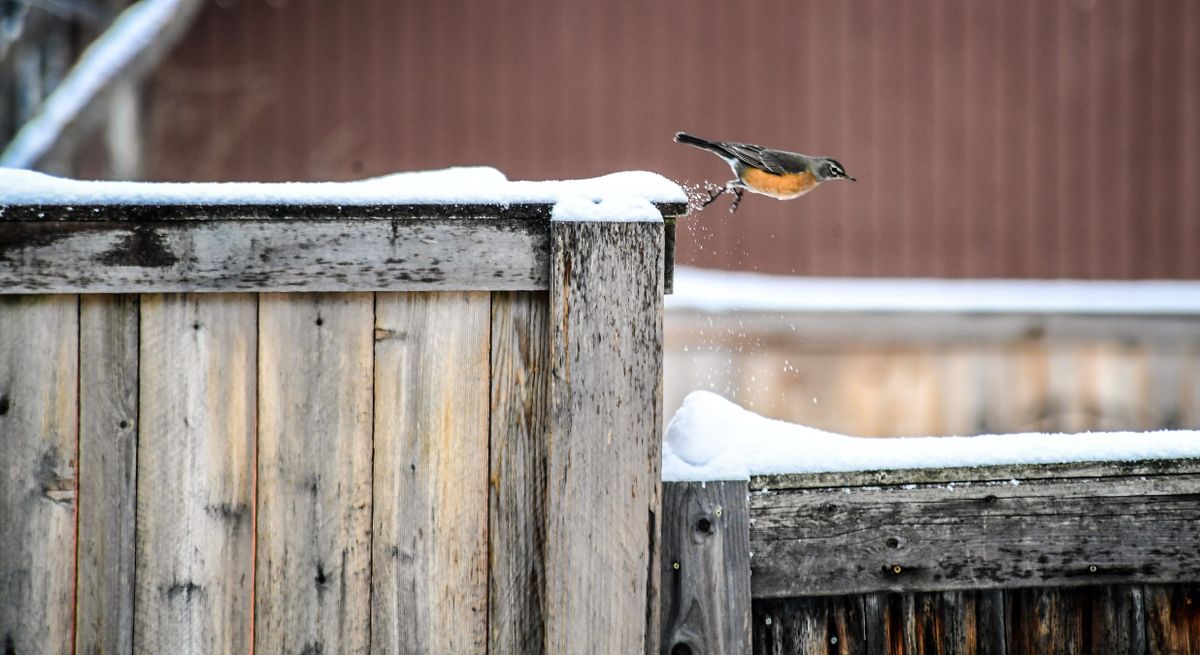Cool Critters: Robins have returned for spring? Guess what – they never left
A robin snacks on a red berry during a stop atop a tree on Feb. 15, 2019, on Spokane’s South Hill. (Dan Pelle/THE SPOKESMAN-REVIEW)
The American robin has long signaled the arrival of spring, right up there with crocuses poking through dirt and frogs ribbiting at night.
But despite the familiar songbird’s reputation for being the first bird to return each spring, most robins are year-round residents of the Inland Northwest.
Even if you didn’t see them this past winter, they were here all along.
Which isn’t to say that no robins fly southward for winter. In the United States, those that breed in Alaska and the northernmost parts of Montana, the Midwest, Vermont and Maine generally migrate to the southern U.S., according to the National Audubon Society. But here in Washington and most of the rest of the Lower 48, the majority of them stay.
The reason robins seem to disappear each winter is rooted in their diet and behavior changes, said Andrew Farnsworth, bird migration expert at the Cornell Lab of Ornithology in Ithaca, New York. When the weather turns cold, they flock and hunker down near trees and shrubs laden with berries for food. When most of the berries are eaten, they move on to other trees and shrubs, he said, which, depending on where they live, could be in a different neighborhood or nearby town, rather than across the country.
“Robins can withstand very cold temperatures,” Farnsworth said. “They follow the food. As long as food is available, they’re able to do well right where they are.”
Then spring rolls around, and robins are hopping across our lawns and yanking earthworms from the ground. And again we hear their cheerful, melodic song. The robins are back from winter migration, we think. Spring is here!
But here’s what’s really going on: As temperatures warm, the wintering flocks split up and the robins disperse. Alighting in visible locations such as lawns, fields, meadows and city parks, they switch to their seasonal diet of earthworms and insects. These avian merrymakers are especially active in the morning – the early bird gets the worm, so to speak.
Besides gorging, the robins breed and build nests, so there are lots of opportunities for us to see them flitting about. The females lay a clutch of lovely sky-blue eggs. After they hatch, both parents feed the nestlings, which means they’re out searching for fresh food supplies. Then, after the young leave the nest, the female builds a new nest and lays more eggs.
By midsummer, their familiarity makes robins easy to overlook. Some may even regard them as dull.
But the American robin is far from dull, Farnsworth said.
“It’s a cool species,” he said.
First off, it is a “dynamic migrant,” he said, adding that whether robins fly 10 miles to another neighborhood for winter or thousands of miles to a southern latitude, “they know where they need to be to survive.”
Robins also are highly adaptable and thrive in urban areas, Farnsworth said. Just think – they figured out that mowed lawns and city parks provide a nutritious, wiggly food source.
Finally, robins have keen sight and hearing. Have you ever wondered what’s behind all that head tilting when they’re standing upright on the ground?
“They’re looking and listening for worms when they forage, and I think that’s cool,” Farnsworth said.





